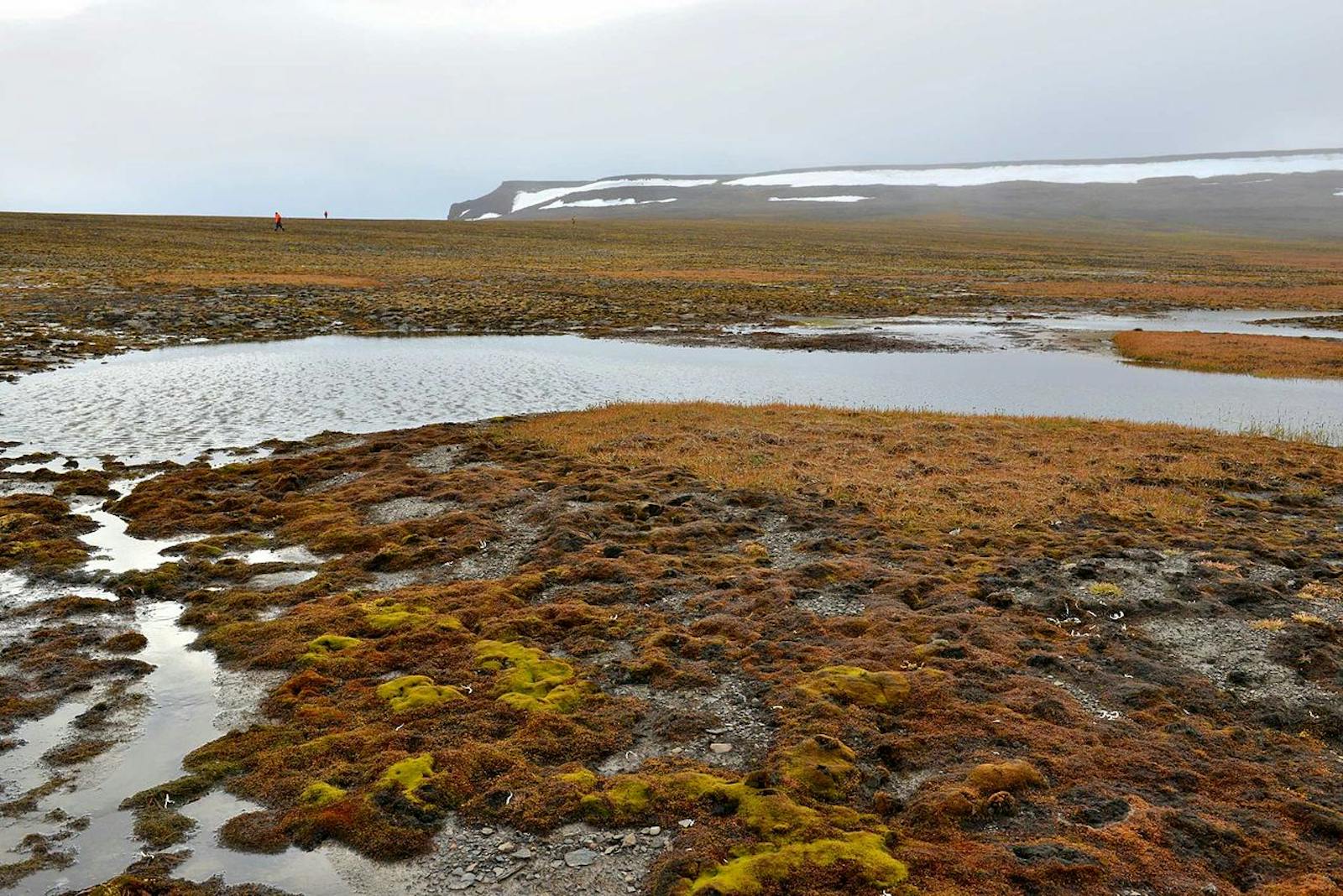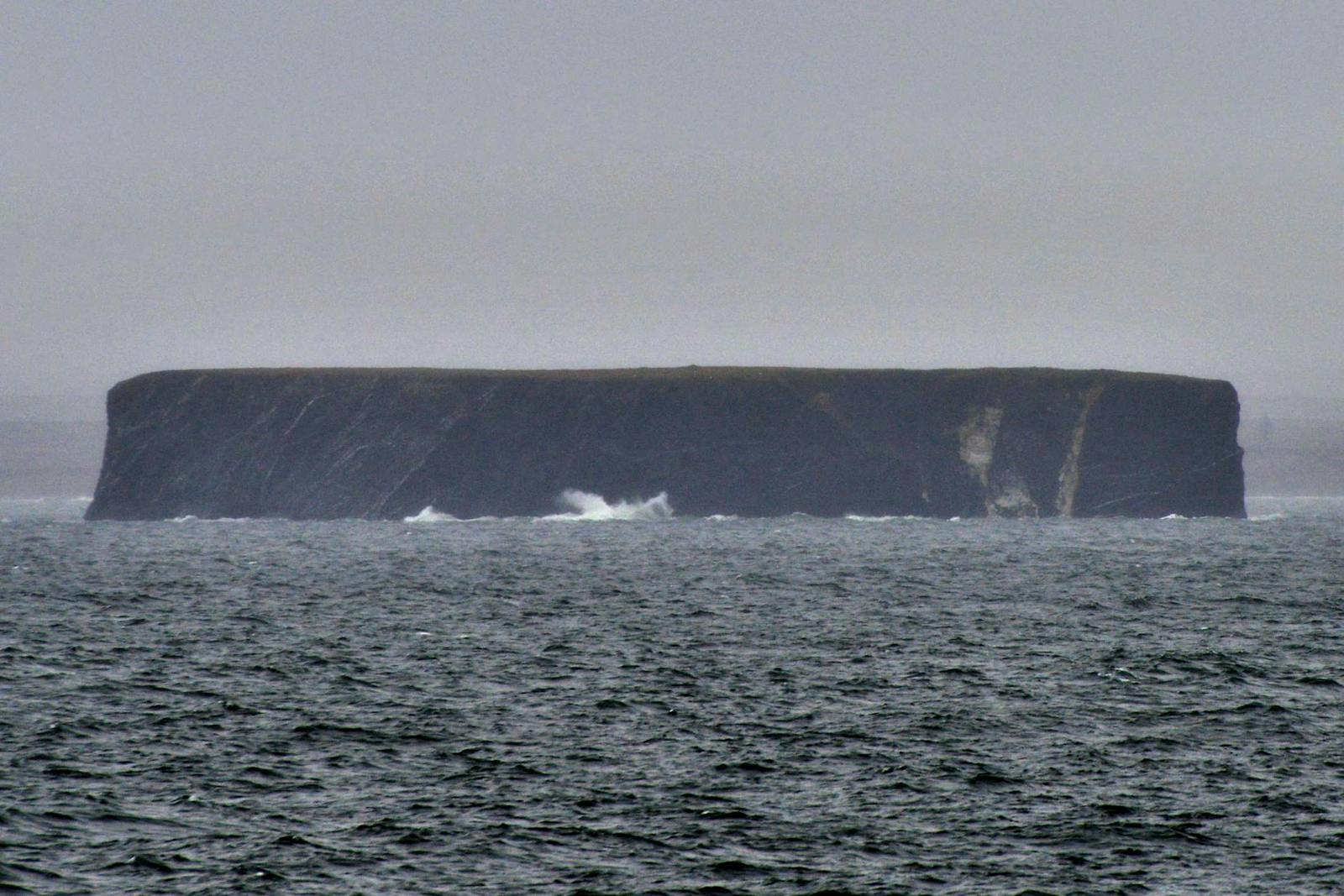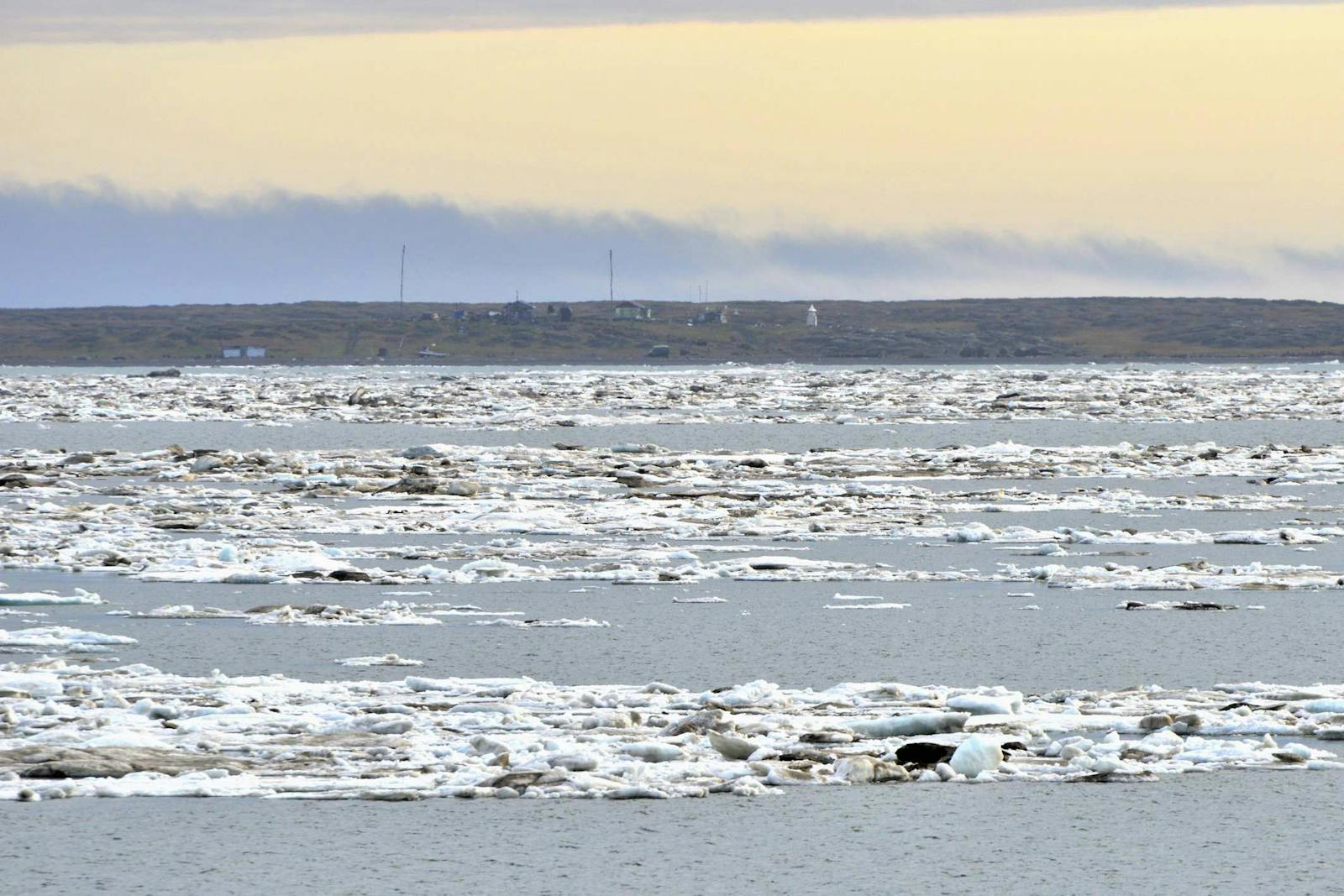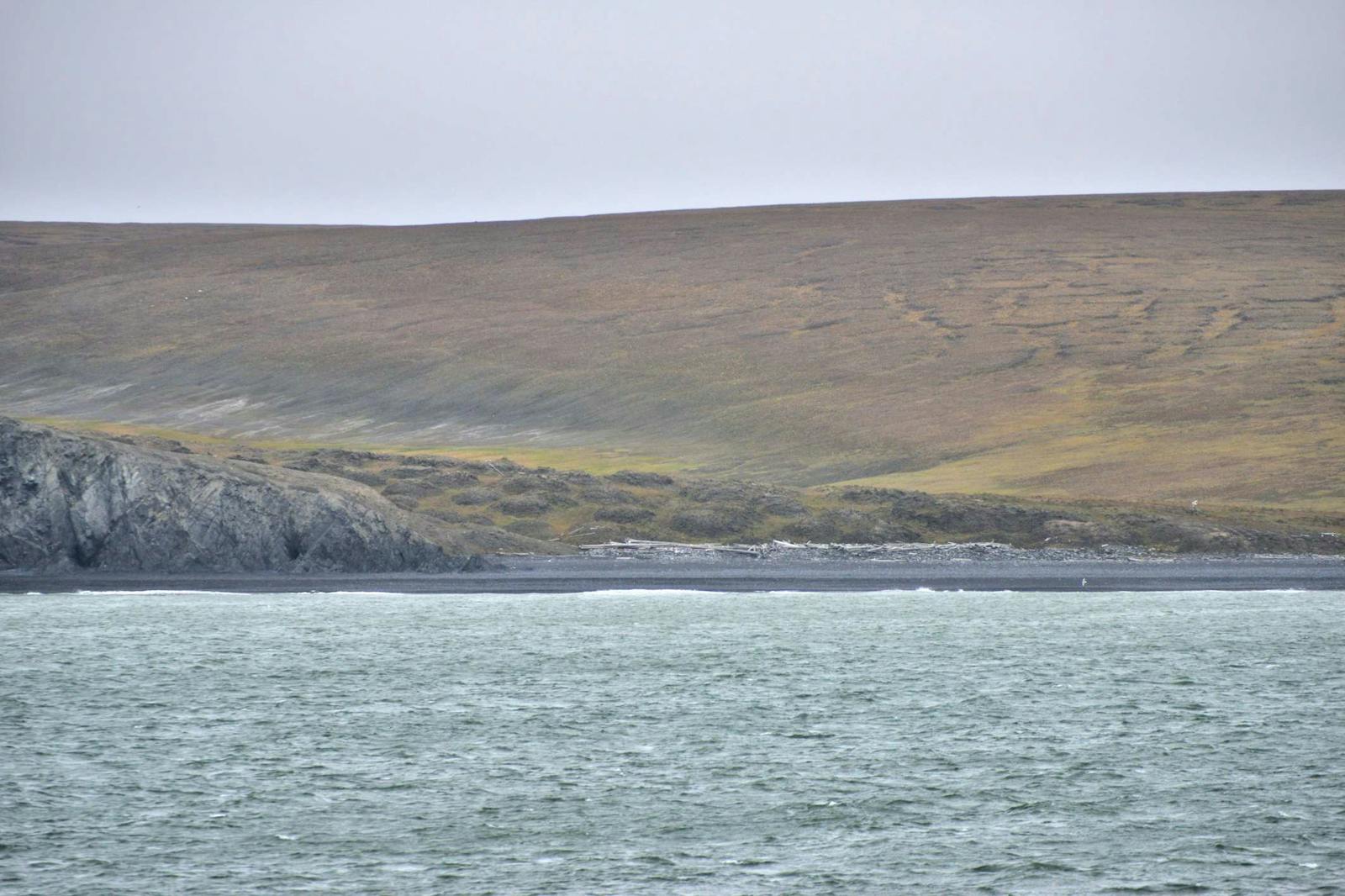Novosibirsk Islands Arctic Desert
The ecoregion’s land area is provided in units of 1,000 hectares. The conservation target is the Global Safety Net (GSN1) area for the given ecoregion. The protection level indicates the percentage of the GSN goal that is currently protected on a scale of 0-10. N/A means data is not available at this time.
Bioregion: Greater Eurasian Tundra (PA4)
Realm: Subarctic Eurasia
Ecoregion Size (1000 ha):
3,703
Ecoregion ID:
777
Conservation Target:
100%
Protection Level:
10
States: Russia
The Novosibirsk Islands Arctic Desert ecoregion is an extreme north archipelago shrouded in mystery and legend. Known as the land of mammoths, remains of Pleistocene megafauna are widespread. Only a few low-growing plants and a wide variety of mosses and lichens can cope with the harsh conditions. The islands are havens for nesting snowy owls, long-tailed duck, polar bears, and Pacific walrus.

The flagship species of the Novosibirsk Islands Arctic Desert ecoregion is the ringed seal. Image credit: Creative Commons
The Novosibirsk archipelago is found off the north coast of eastern Siberia, dividing the Laptev and East Siberian Seas. These are extremely remote islands, the most recent only discovered by chance in 2013. Remains of Pleistocene megafauna such as wooly mammoths are frequently found in the permafrost soils and low sea cliffs.
Northern and western coasts are important areas of sea ice production. Offshore winds push newly frozen ice northwards to form pack ice in the Arctic Ocean. Where this occurs, a region of open water and new ice is created, which will also be blown offshore. The region where this cycle occurs is known as the Great Siberian Polynia. Winters last 8 months with January temperatures of -32°C. July temperatures are around 4°C and annual precipitation 200 mm.
Patches of red-gold creeping alkali grass grow along the coastline with bright flowers of saltmarsh starwort and Arctic buttercup. Permafrost conditions shape the landscape—“baidjarakhs” are soil mounds several meters high, and up to 20 m across, formed by thawing and freezing of ice underground. In the northernmost areas these are home to tundra grass, mountain groove moss, ribbed bog moss, and flexible cow-hair moss. In the southern islands, species such as tealeaf willow, white arctic mountain heather, Alpine mountain-sorrel, boreal alopecurus, and Arctic bluegrass grow.
Polar desert is found between baidjarakhs and in hilly areas. This consist of bare ground, rock and rubble with vegetation dominated by arctic mosses and lichens such as Arctic peat moss, carrion moss, Seligeria polaris, Aspicilia composita, and Miriquidica atrofulva. River valleys support polar willow, sticky mountain avens, and alpine foxtail. Boggy areas have water sedge, Arctic marsh grass, cottongrasses, varnished hook moss, and three-angled thread moss. There are over 200 lichen species in the ecoregion.
The Great Siberian Polynia is important for ringed seal populations and their main predator, the polar bear, which builds dens on the sea ice and the islands. The area is a migration stopover site for seabirds including Steller’s eider, spectacled eider, and ivory gull. Laptev Sea populations of Pacific walrus rely on the unfrozen areas of sea. Wild reindeer migrate to and from the mainland, spending the summer on the islands before the majority head back across the ice for winter. Wolves follow the herd. Snowy owls breed on the islands, feeding on brown and Arctic lemmings. Long-tailed ducks breed amongst the hummocks, bogs and lakes while ivory gulls breed in polar desert areas when not disturbed by Arctic fox.
Much of the ecoregion is undisturbed but status information is minimal. Since 2016 a Russian military base has been established on Kotelney Island. Warmer temperatures due to climate change are thawing permafrost, causing soil subsidence, washing soil into the sea, and reducing island sizes. The entire ecoregion has been covered by the Great Siberian Polynya Zakaznik (Protected Area) since 1996. In 2018, a federal sanctuary on the archipelago of the Novosibirsk Islands was created, although its management and protection status remain unclear.
The Arctic has seen increased tourism, fishing, oil production, and shipping, increasing the risk of oil spills, which are difficult to tackle in icy conditions. Rising temperatures will increase the distribution of prostrate and dwarf shrubs in current polar desert areas, substantially reduce the extent of polar desert. The lack of sea ice will prevent reindeer from migrating to the mainland during winter, leaving them vulnerable to food shortage and extreme weather, and prevent polar bears from hunting, leading to population decline.
The priority conservation actions for the next decade will be to: 1) prevent pollution and habitat loss due to oil operations, tourism, and shipping; 2) implement a protected area management plan that include responsibly managed geological and paleontological exploration; and 3) research and monitor vegetation and animal populations to mitigate impact by climate change.
Citations
- Isaev, A.P., Protopopov, A.V., Protopopova, V.V., Egorova, A.A. Timofeyev, P.A., Nikolaev, A.N., Shurduk, I.F., Lytkina, L.P., Ermakov, N.B., Nikitina, N.V., Efimova, A.P., Zakharova, V.I., Cherosov, M.M., Nikolin, E.G., Sosina, N.K., Troeva, E.I., Gogoleva, P.A., Kuznetsova, L.V., Pestryakov, B.N., Mironova,S.I., and Sleptsova, N.P. 2010. Vegetation of Yakutia: Elements of Ecology and Plant Sociology. In: Troeva, E.I., Isaev, A.P., Cherosov, M.M. and Karpov, N.S. eds. The Far North: Plant Biodiversity and Ecology of Yakutia. Dordrecht: Springer. pp. 143-260
- Kuznetsova, L.V., Zakharova, V.I., Sosina, N.K., Nikolin, E.G., Ivanova E.I., Sofronova, E.V., Poryadina, L.N., Mikhalyova, L.G., Vasilyeva, I.I., Remigailo, P.A., Gabyshev, V.A., Ivanova, A.P. and Kopyrina, L.I. 2010. Flora of Yakutia: Composition and Ecological Structure. In: Troeva, E.I., Isaev, A.P., Cherosov, M.M. and Karpov, N.S. eds. The Far North: Plant Biodiversity and Ecology of Yakutia. Dordrecht: Springer. pp.25-142.
- Joint Research Centre of the European Commission. 2020. The Digital Observatory for Protected Areas (DOPA) Explorer 4: Novosibirsk Islands arctic desert. [Online]. [Accessed 2 January 2020]. Available from: https://dopa-explorer.jrc.ec.europa.eu/ecoregion/81109




.png?auto=compress%2Cformat&w=300)

